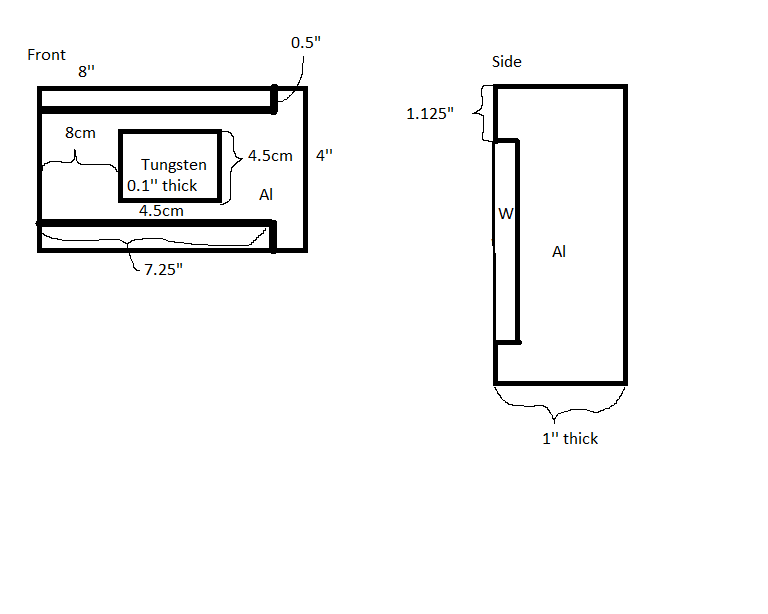Difference between revisions of "Linac Run Plan April 2018, Dr. McNulty"
| Line 68: | Line 68: | ||
==[[25mA, 100ns pulse width, 50cm from beam pipe]]== | ==[[25mA, 100ns pulse width, 50cm from beam pipe]]== | ||
| − | ==5mA, 100ns pulse width, 100cm from beam pipe with Titanium window | + | ==[[5mA, 100ns pulse width, 100cm from beam pipe with Titanium window]]== |
| − | |||
| − | |||
| − | |||
| − | |||
| − | |||
| − | |||
| − | |||
| − | |||
| − | |||
| − | |||
| − | |||
| − | |||
| − | |||
| − | |||
| − | |||
| − | |||
| − | |||
| − | |||
| − | |||
| − | |||
| − | |||
| − | |||
| − | |||
| − | |||
| − | |||
| − | |||
| − | |||
| − | |||
| − | |||
| − | |||
| − | |||
| − | |||
| − | |||
| − | |||
| − | |||
| − | |||
| − | |||
| − | |||
| − | |||
| − | |||
| − | |||
| − | |||
| − | |||
| − | |||
| − | |||
| − | |||
| − | |||
| − | |||
| − | |||
| − | |||
==25mA, 100ns pulse width, 50cm from beam pipe, tungsten target with aluminum beamstop== | ==25mA, 100ns pulse width, 50cm from beam pipe, tungsten target with aluminum beamstop== | ||
Revision as of 19:18, 29 May 2018
Beam Line info
0 degree line
Aluminum window = 0.5mm thick. Radius = 23.813mm
Air gap between Aluminum window and glass slide = 45mm
Glass slide Thickness = 1mm
Run Plan
To find operating point
- Will use 15 OSLs from reproducibility study to make sure that dose is within acceptable range
Experiment
85 Nanodot OSLs for use (dose not include OSLs from reproducibility study)
- upper limit of OSLs is 15Gy, want to be around 7.5Gy with multiple pulses
Machine: 25b Linac
Beam Energy: 8 MeV
Rep Rate: Max (150Hz)
Will talk to engineers about double pulsing and guaranteeing number of pulses and update.
Shot # Start Time End Time Number of Pulses Number of OSLs Distance to end of beampipe Beam Current Aluminum Brick 1 7:00am 7:05am 2 1 1m 5 mA Out 2 7:10am 7:15am 2 1 1m 10 mA Out 3 7:20am 7:25am 2 1 1m 25 mA Out 4 7:30am 7:35am 2 1 1m 50 mA Out 5 7:40am 7:45am 2 1 1m 25 mA Out 6 7:50am 7:55am 2 1 1m 25 mA Out 7 8:00am 8:05am 2 16 1m 25 mA In 8 8:10am 8:15am 2 16 1m 25 mA In 9 8:20am 8:25am 2 16 1m 25 mA Out 10 8:30am 8:35am 2 16 1m 25 mA Out 11 8:40am 8:45am 2 16 1m 25 mA Out
Highest single pulse simulated parameters are 25mA with 100ns pulse width.
Absorbed Dose Information
100mA, 100ns pulse width, 25cm from beam pipe
25mA, 100ns pulse width, 25cm from beam pipe
25mA, 100ns pulse width, 50cm from beam pipe
5mA, 100ns pulse width, 100cm from beam pipe with Titanium window
25mA, 100ns pulse width, 50cm from beam pipe, tungsten target with aluminum beamstop
Added .254cm of Tungsten and 2.286cm of Aluminum to be used as converter and beam stop.
Assuming and a pulse width of
Then
OSL (8MeV)
of a pulse. ~15mil e- simulated, ~15bil e- per pulse. With beam parameters given above.
Deposited Energy:
OSL geometry: 0.501cm diameter cylinder of 0.03cm thickness with beam incident on flat face.
OSL Crystal density
Mass of a single OSL crystal:
Scaling deposited energy by 1000 to account for only shooting a 1000th of a pulse, the deposited energy becomes
Converting to Joules for dose calculation:
Average dose per pulse:
